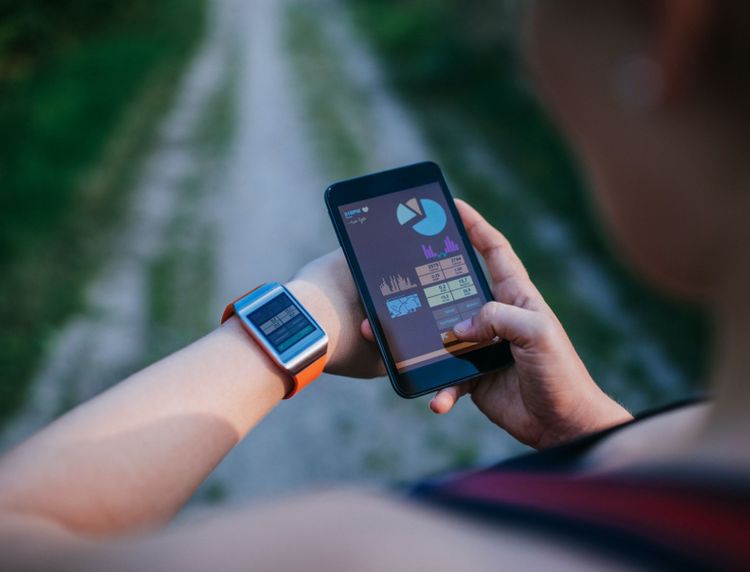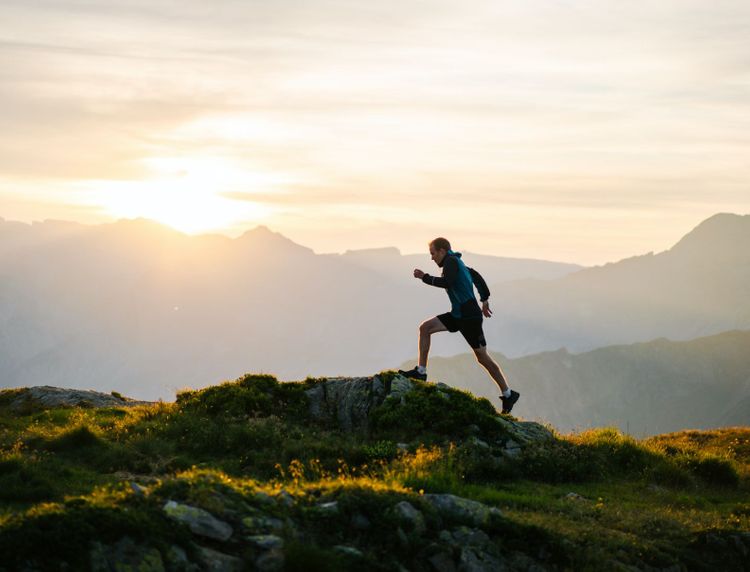Standing Yoga Poses
Yoga is a great way to improve your physical and mental health, as well as your balance, flexibility, and strength. Standing yoga poses are especially beneficial for building a solid foundation, correcting your posture, and enhancing your stability.
Here, we will introduce you to some of the best standing yoga poses and how to perform them correctly. Whether you are a beginner or an advanced practitioner, you can benefit from these poses and incorporate them into your daily routine.
Share this article
Explore the Best Health Insurance Plans for Your Needs
List of Content
- Top 15 Standing Yoga Poses
- Conclusion
- FAQS
Top 15 Standing Yoga Poses
1. Tadasana (Mountain Pose)
It is the most basic standing yoga pose for beginners. It is also the starting point for many other poses. It helps you to establish a good posture, improve your balance, and cultivate awareness of your body.
How to do it:
Begin by positioning your feet close together or at a hip-width distance. Ensure your weight is equally spread across all four corners of your feet.
Gently move your shoulders down and away from your ears, retract your shoulder blades along your back, and raise the top of your head upward.
Activate your thigh muscles, pull in your abdominal area, and elongate your spine.
Rotate your palms to point toward the front of the room.
Feel the energy rising from the earth through your feet, legs, torso, arms, and head.
2. Vrksasana (Tree Pose)
It is a balancing standing position yoga that challenges your stability and concentration. It also opens up your hips, strengthens your legs, and improves your alignment.
How to do it:
Starting from the Mountain Pose, transfer your weight onto your left foot while raising your right foot off the ground.
Flex your right knee and position the sole of your right foot on the inner side of your left thigh, calf, or ankle. Be cautious not to place it on the knee joint.
Apply gentle pressure, pressing your right foot securely against your left leg and vice versa. Fix your gaze on a point in front of you to aid in maintaining your balance.
Join your hands in a prayer-like position before your chest, or extend them overhead with your palms touching or spaced at shoulder-width.
Keep your hips level and facing forward. Prevent your right hip from dropping or turning outward.
Elongate your spine and elevate your chest. Maintain deep and steady breathing throughout.
3. Utthita Trikonasana (Extended Triangle Pose)
Utthita Trikonasana is a stretching pose that opens up your chest, shoulders, hips, and hamstrings. The key benefit of this standing asana is that it strengthens your legs, core, and arms, improving your balance and posture.
How to do it:
Starting from the Mountain Pose, take a step, creating a distance of approximately 3 to 4 feet between your feet. Ensure that your right foot points forward while your left foot is turned slightly inward.
Line up your right heel with the arch of your left foot. Keep both legs straight and active.
Inhale as you stretch your arms out to the sides, reaching them at shoulder level, with your palms facing downward.
Exhale and reach your right hand toward your right shin, ankle, or the floor, depending on your flexibility. Keep your left arm vertical or slightly behind your ear.
Rotate your torso to the left and open your chest. Stack your shoulders on each other and gaze at your left thumb or the ceiling.
Press firmly on both feet and lengthen your spine. Do not collapse to your right side or let your hips stick out.
4. Parivrtta Parsvakonasana (Revolved Side Angle Pose)
It is a twisting standing yoga pose that stretches the hamstrings, groin, shoulders, and chest. It also strengthens the legs, spine, and abdominal muscles.
How to do it:
Start from Mountain Pose, standing with your feet together and your arms by your sides.
Step your right foot back about four feet and turn it slightly outward. Your left foot should be positioned to face forward.
Next, slowly bend your left knee over your left ankle and lower your hips until your left thigh is in parallel alignment with the ground. This is Virabhadrasana II (Warrior II Pose).
Place your hands together in front of your chest in the Prayer Position.
Rotate your upper body to the left and loop your right elbow around the outside of your left knee. Push your hands together to enhance the twist.
Put your right leg forward and press your right heel firmly into the floor.
Turn your head to look up at the ceiling or over your left shoulder.
Hold for five to ten breaths, then release the twist and return to Tadasana. Repeat on the other side.
5. Virabhadrasana I (Warrior I Pose)
It is a strengthening standing yoga asana that works your legs, hips, core, back, and arms. It also opens your chest, shoulders, and lungs, boosting your confidence and courage.
How to do it:
From Anjaneyasana, lift your left knee off the floor and straighten your left leg. Keep your right knee over your right ankle and your left heel lifted.
Turn your left foot a bit to the outside and apply pressure to the outer edge of your left foot against the floor. Align your hips and shoulders facing forward.
Take a deep breath and raise your arms overhead with palms facing each other or touching. Your shoulders must be relaxed and not too close to your ears.
Lift your chest and look upward or forward without straining your neck.
Engage your core and keep your spine long and neutral.
6. Virabhadrasana II (Warrior II Pose)
This powerful pose strengthens your legs, back,arms, and hips. It also stretches your inner thighs, groin, and chest, improving your balance and concentration.
How to do it:
Moving from the Warrior I pose, gently bring your arms down to shoulder level and extend them out to the sides, ensuring your palms face downward.
Rotate your right foot to a 90-degree angle to the right and make a slight inward turn with your left foot. Ensure that your right heel aligns with the arch of your left foot.
Gently flex your right knee over your right ankle while keeping your left leg strong and engaged. Ensure your right knee does not extend past your right ankle or collapse inward.
Turn your head to the right and gaze at your right fingertips. Keep your shoulders stacked over your hips and your chest open.
Press firmly into both feet and lengthen your spine. Do not lean forward or backward.
7. Utthita Parsvakonasana (Extended Side Angle Pose)
It is a challenging posture that enhances the strength of your legs, hips, core, back, and arms. Additionally, it promotes stretching in your side body, groin, and shoulders while stimulating your abdominal organs.
How to do it:
From Virabhadrasana II, exhale and lower your right hand to the floor on the inside or outside of your right foot, depending on your flexibility. You can also put your right elbow on your right thigh for more support.
Inhale and reach your left arm over your left ear. Your palm should be facing down. Keep your left shoulder away from your ear and align with your left side.
Rotate your torso to the left and open your chest. Stack your shoulders on each other and gaze at your left hand or the ceiling.
Press firmly into both feet and lengthen your spine. Do not collapse into your right side or let your hips stick out.
8. Ardha Chandrasana (Half Moon Pose)
It is a balancing pose that strengthens your legs, hips, core, back, and arms. It also opens up your chest, shoulders, and hips, enhancing your coordination and awareness.
How to do it:
Transitioning from Utthita Parsvakonasana, extend your right leg and raise your left leg to be parallel with the floor. Keep both legs active and flexed.
Position your right hand on the ground, approximately a foot in front of your right foot, or on a block if you require more elevation. Ensure your left arm is upright or slightly behind your ear.
Rotate your torso to the left, opening up your chest. Align your shoulders and hips with each other, and direct your gaze towards your left thumb or upward to the ceiling.
Maintain balance on your right foot and hand while applying steady pressure to both. Be cautious not to overextend or lock your right knee or elbow.
9. Prasarita Padottanasana (Wide-Legged Forward Bend)
It is a relaxing pose that works on your calves, back, and neck, and hamstrings. It also calms your mind, relieves stress, and improves blood circulation.
How to do it:
Shifting from Ardha Chandrasana, gradually lower both legs to the ground and align both feet parallel. Separate them by about 3 to 4 feet, depending on your height.
Rest your hands on your hips and take a deep breath. Elevate your chest and elongate your spine.
As you exhale, pivot at your hips, bending forward from your waist.
Position your hands on the floor beneath your shoulders or use blocks for support. Alternatively, you can hold your big toes, grasp your ankles, or keep your calves with your fingers.
Relax your head and neck, allowing gravity to guide you deeper into the posture gently. Make sure not to round or tense your back.
10. Malasana (Garland Pose)
Malasana is a squatting pose that stretches the hips, groins, ankles, and lower back. It further encourages the functioning of the digestive system and activates the sacral chakra, which is associated with creativity and pleasure.
How to do it:
Start by standing with your feet a little broader than hip-width apart and show your toes outward.
Flex your knees and flatter your hips until you attain a deep squat position.
Join your hands together in front of your chest and gently press your elbows against the inner sides of your knees.
your spine and let your shoulders relax. Suppose your heels do not make contact with the floor. Get a folded blanket or block underneath them for further support.
Maintain this posture for 5 to 10 breaths or longer if it feels comfortable for you.
11. Shanti Virabhadrasana (Peaceful Warrior Pose)
Shanti Virabhadrasana is a variation of Virabhadrasana II (Warrior II Pose). This standing asana is named after a mythological Hindu warrior. The back bending pose opens the chest, shoulders, and hips. It also strengthens the legs and core, boosts self-esteem, and calms the nervous system.
How to do it:
From the Virabhadrasana II position, flip your right palm up and inhale as you lift your right arm up and back, arching your torso towards your left leg.
Lower your left arm to rest on your left thigh or calf.
Look up at your right hand or forward if that feels better for your neck.
Keep your front ribs drawn in and your tailbone slightly tucked.
Maintain this position for a duration of 3 to 5 breaths, and subsequently, return to Virabhadrasana II before repeating the sequence on the opposite side.
12. Ashta Chandrasana (Crescent Lunge Pose)
It is a high lunge pose that lengthens the sides of the body and opens the hips. It also improves circulation, builds bone density, improves balance, and strengthens the respiratory system.
How to do it:
Begin by taking up the Mountain Pose with your feet together.
Now, step your left foot back approximately three to four feet, keeping it positioned on the ball of your foot.
Bend your right knee in alignment with your right ankle, ensuring your left leg remains straight.
Extend both arms upward towards the sky, with your palms either facing each other or touching.
Elevate your chest and direct your gaze either upward or forward. Keep your hips squared to the front and maintain relaxed shoulders.
Remain in this position for 5 to 10 breaths, and subsequently, switch to the other side.
13. Natarajasana (Lord of the Dance Pose)
It is a standing balance pose that mimics the dance of Lord Shiva, the Hindu god of destruction and creation. It is a back-bending pose that stretches the shoulders, chest, thighs, and ankles. Natrajasana also challenges the core stability, coordination, and concentration.
How to do it:
Start by taking up Mountain Pose with your feet together.
Shift your weight to your left foot. Next, flex your right knee, moving your right heel towards your buttocks.
Extend your right hand backward and grasp the inside of your right foot or ankle.
You can keep your left arm by your side or extend it forward to maintain balance.
Press your right foot into your hand, simultaneously lifting it up and back as far as possible without losing balance or twisting your hips.
Rotate your right shoulder, allowing your elbow to point upward, and fix your gaze on a steady point on the floor or slightly ahead.
14. Eka Pada Utkatasana (One-Legged Chair Pose)
Eka Pada Utkatasana is a variation of Utkatasana (Chair Pose), which is a squatting pose that strengthens the legs, glutes, and core. It also opens the hips, improves digestion, and calms the mind.
How to do it:
Start by taking up Mountain Pose with your feet together.
Angle your knees and lower your hips until you are in a squat position.
Start by bringing your hands together in Anjali Mudra, the prayer position at your heart. As you do this, be mindful of the four corners of your left foot grounded on the floor while you raise your right foot off the ground.
Cross your right ankle over your left thigh just above your knee and flex your right foot.
Keep your left knee bent and your spine long. If you want to go deeper, you can lower your chest until your hands touch your right calf or the floor.
15. Eka Pada Utkatasana (One-Legged Chair Pose)
This pose is a standing yoga pose one leg up. It is a balancing pose that stretches the back of the legs and improves posture. It also challenges core strength and concentration. The name comes from the Sanskrit words Hasta, meaning “hand,” Pada, meaning “foot,” Angusta, meaning “big toe,” and Asana, meaning “pose.”
How to do it:
Begin with Mountain Pose.
Transfer your weight to your left leg and elevate your right knee toward your chest. Ensure that your left leg remains straight but not completely locked.
Bend at your waist and use your right hand to secure your right big toe by clasping it with your index and middle fingers. You can also use a strap around your foot if you can’t reach it.
Inhale and extend your right leg forward as much as you can without rounding your spine. Keep your right foot flexed and active.
Exhale, lift your chest and draw your shoulders down. Find a steady gaze point on the floor or the wall in front of you.
Conclusion
These are some of the best standing yoga names with a detailed explanation of how to perform them. You can practice them individually or as a sequence, starting from Tadasana and ending with Prasarita Padottanasana. You can also repeat the sequence on the other side by switching the roles of your right and left legs. Remember to breathe deeply, listen to your body, and enjoy the benefits of these poses.
These standing asana names with images can help you take your initial steps towards a healthy lifestyle. Though yoga helps in keeping health woes at bay, it is still a good idea to get a health insurance plan for unforeseen healthcare requirements. Further, you can add a critical illness insurance plan to get financial security against serious illnesses which usually require long-term and expensive treatment. With Tata AIG, you can compare and buy a health insurance policy online through our transparent and hassle-free process.
FAQS
What are standing poses good for?
Standing yoga poses are fantastic for improving balance, strength, and flexibility. They help you build strong legs and core muscles. These poses also boost your concentration and focus.
Which are the five standing asanas?
Five common standing yoga asanas are Mountain Pose (Tadasana), Tree Pose (Vrikshasana), Warrior I (Virabhadrasana I), Warrior II (Virabhadrasana II), and Extended Triangle Pose (Trikonasana).
How many standing asanas are there?
Yoga has many standing asanas, and the exact number can vary. However, a typical yoga practice includes around 20 to 30 standing poses. These poses work on different muscle groups.
Is Anjaneyasana a standing pose?
Anjaneyasana, or the Low Lunge, is not exactly a standing pose. It is a kneeling pose where one knee rests on the ground while the other leg is in a lunge position.
Explore the Best Health Insurance Plans for Your Needs
Share this article
Latest from our blogs

15 terms you must know before buying health insurance
We have listed all 15 terms a health insurance buyer should ...
Read More
How Much Health Insurance Do You Need?
While more and more people are getting insurance for things ...
Read More
4 simple steps to claim MediClaim in India
Check that all the documents contain required information li...
Read More